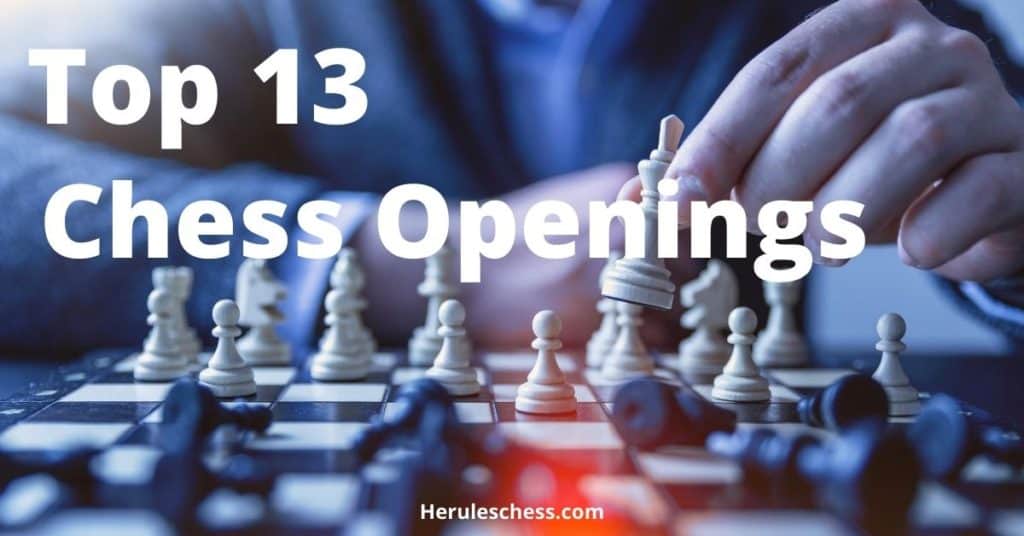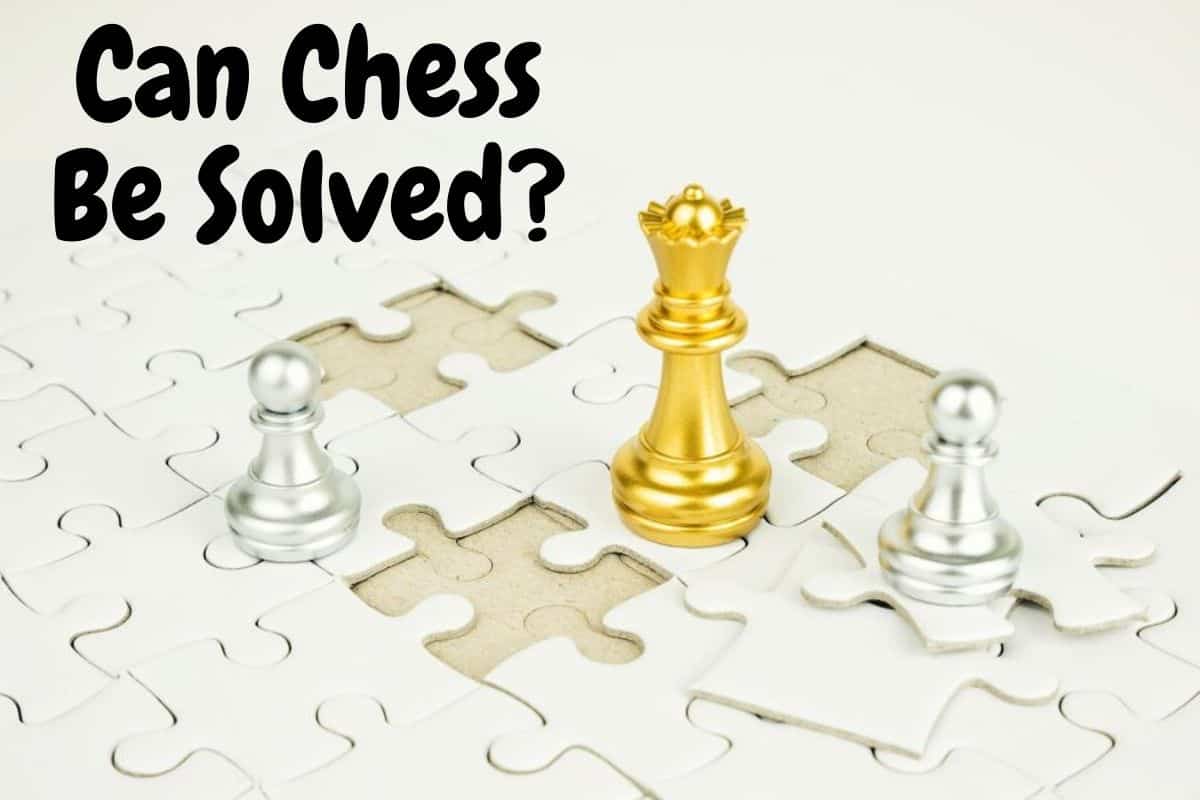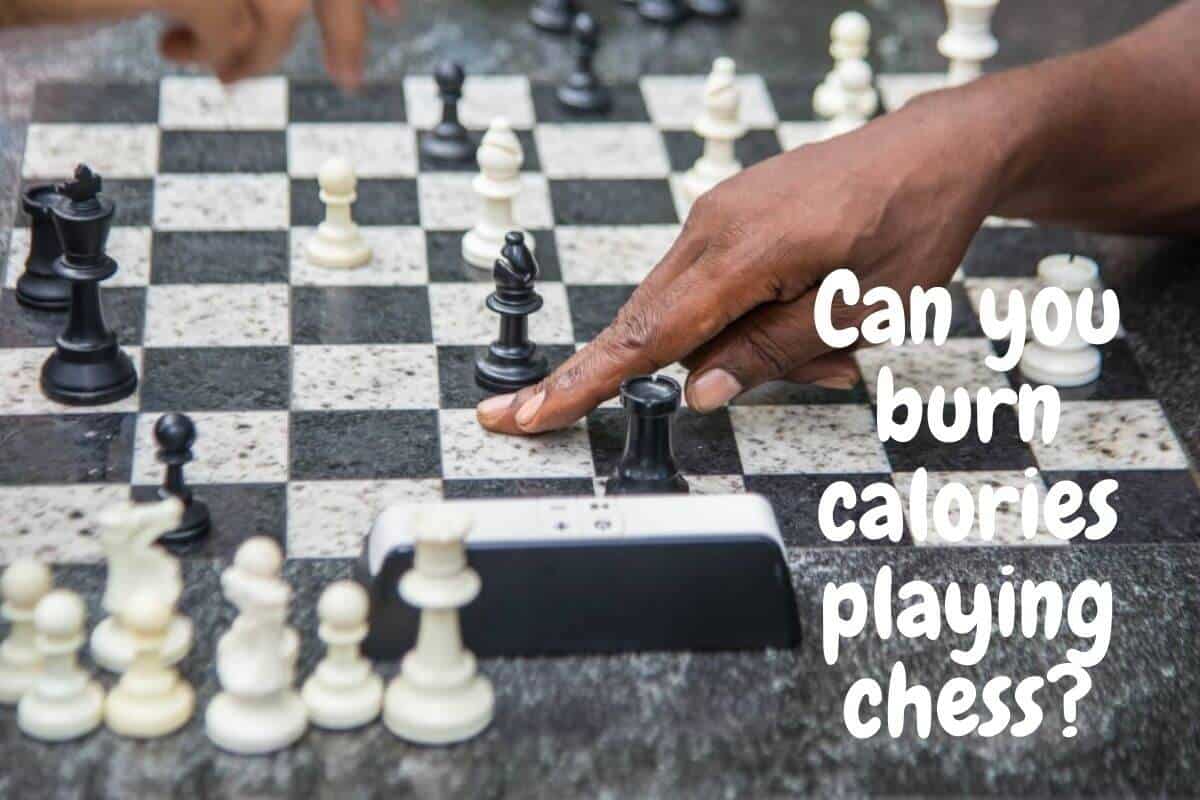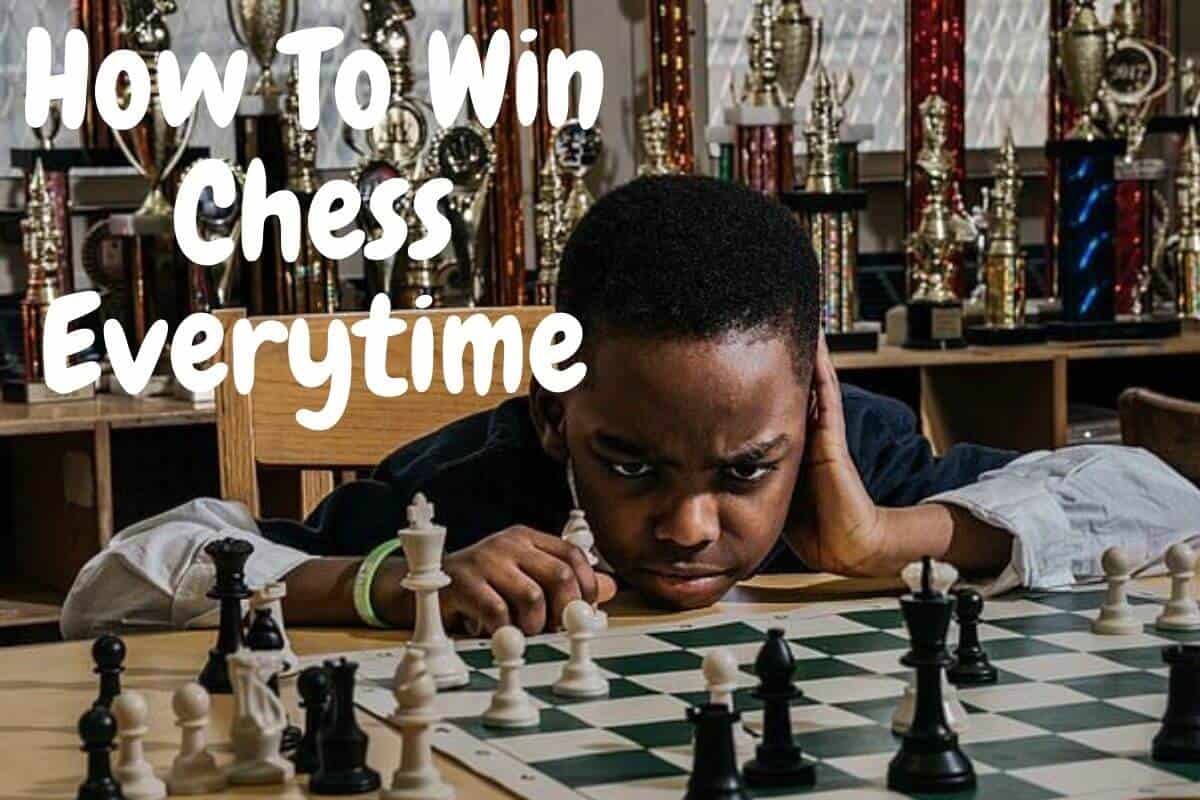Having an effective opening can help you set the pace and tone for the game. Your opening can give away your style to your opponent and vice versa, thus, it gives you ample opportunity to play according to your opponent’s style. You might wonder, “What good an opening can do”? Let me state here at this point that many games have been finished in a matter of minutes due to powerful openings.
Sometimes all you need is a challenging opening to catch your opponent off guard and drive the game in your favor. Hence it is important that you are aware about the different openings in chess not only to use them against your opponent but also to know what to expect when your opponent plays a certain one.
Keeping this in mind, I have chosen some of the most important chess openings and explain them in this article. I believe these are the best chess openings for both white and black at the beginner stage all the way to the elite level. Use them wisely.
Here are the best chess openings for beginners in 2021:
- Ruy Lopez
- Italian Game
- Sicilian Defense
- French Defense
- Caro-Kann Defense
- Pirc Defense
- English Opening
- Alekhine
- Queen’s Gambit
- Modern Defense
- King’s Indian Defense
- King’s Indian Attack
- Dutch Defense
Top 13 Best Chess Openings For Beginners
1. Ruy Lopez
Moves: 1. e4 e5 2. Nf3 Nc6 3. Bb5

This opening is popularly known as the Spanish game and was named after a Spanish priest, Ruy Lopez, who discovered this opening in the year of 1561. This opening was however not appreciated or used much at that point of time. Only over the years, this has become a favorite among pros (grandmaster levels as well) and is regarded as one of the most powerful chess openings.
It is used as White’s best attempt in gaining an advantage after double king pawn formations. A major plus of this opening is that it gives the white player enough opportunity to develop a complex offensive strategy and also slows down Black’s pawn formation.
Recommended course: The Open Ruy Lopez by Andrew Martin
2. Italian Game
Moves: 1. e4 e5 2. Nf3 Nc6 3. Bc4

The Italian Game is another old chess opening like the Ruy Lopez and was discovered in the 1600s. This opening was fairly prominent at that point of time since people overlooked the Ruy Lopez opening. Nevertheless, with the Ruy Lopez opening hogging the limelight over the years, this opening has lost its charm.
This is generally because of the conviction that the Bb5 move in the Ruy Lopez opening puts the Black at a better disadvantage than the Bc4 move in this opening. Nevertheless, this is a powerful opening by itself and should be considered if you want to start the game on an offensive note.
Recommended book: Italian Game and Evans Gambit by Jan Pinski
3. Sicilian Defense
Moves: 1. e4 c5

This opening is a favorite among the Black players when White moves the king pawn to e4. The reason is because this opening gives the Black player an opportunity to retort very powerfully to White’s opening. This method perhaps can neutralize any aggressive opening of the White player, which is precisely the reason behind its popularity today. The c5 is a much more effective response to e4 than any other move and can be used to black’s advantage if the next moves are played right.
This defensive stance was considered as a terrible opening when it was discovered initially and was not used in many games originally. Nowadays, the Sicilian is one of the most common chess openings being widely used across various levels of tournaments play.
Recommended book: The Sicilian Sveshnikov by Mikhail Krasenkov
4. French Defense
Moves: 1. e4 e6 2. d4 d5

The French Defense is an opening that favors the Black players. Even though this opening gives way for the White player to get hold of the center, it forces the white pawn in the e line and pressurizes the White player to play his next move wisely which is used to the advantage of the Black player.
Recommended book: The French Winawer: Move by Move – Giddins
5. Caro-Kann Defense
Moves: 1. e4 c6

This is again another opening that is favored by the Black players because it offers a strong retort to the White’s e4 opening. Though it offers good defense to the Black player, it is not as popular as the French defense. This opening has undergone a lot of variations since its discovery.
The opening was discovered by two chess players namely Horatio Caro, an English player and Marcus Kann, an Austrian player in the year 1886. Though this is not a dynamic opening unlike others, this can win huge favors for the Black player if backed by a well-defined pawn structure.
Recommended book: Opening Repertoire: The Caro-Kann by Jovanka Houska
Related Post: How to play the Caro-Kann
6. Pirc Defense
Moves: 1. e4 d6 2. d4 Nf6 3. Nc3

This opening is again well suited for Black players. Just like the Sicilian defense, this opening was regarded as a terrible one at the time of its discovery. However, over the years, it has gained popularity and has become a favorite among Black players. This is an interesting as well as a clever opening because of the way it is capable of turning the tables.
In the beginning, this opening gives room for the white to build in the center. However, this can be used to the advantage of Black to launch an aggressive attack against the White in the center and is one of those openings that give the Black player ample opportunity to take up an offensive strategy through opening up a lane for the black queen and bishop to gain an upper hand for the game.
Recommended book: Starting out the Pirc/Modern Defense by Joe Gallagher
7. English Opening
Moves: 1. c4

This is another opening that can work wonders for the White player, if played right. The English has undergone a lot of experimentations over the years and there are numerous combinations of subsequent moves. If the white player plays it cautiously, he will be able to adopt an offensive strategy against the Black player by opening up a lane for the queen.
For all practical purposes, this can be called as a reversed Sicilian defense for easy understanding. However, this opening is more dynamic than the Sicilian defense as there is lot of scope for improvement and innovation; for this element of unpredictability associated with it, this opening is considered as another one of the most powerful openings.
Recommended book: The English Opening Volume 3 by Mihail Marin
8. Alekhine’s Defense
Moves: 1. e4 Nf6

As opposed to the other openings we have seen till now, Alekhine’s defense was not discovered long ago. It is in fact a modern opening and was only discovered in the year of 1921. This defense is also regarded as a hypermodern defense and is a very useful opening for Black players as it gives them an opportunity to launch an aggressive attack.
Under this opening, the White player is prompted to move his pawns forward in order to create a broad pawn formation. This broad pawn formation can be easily used by the Black to its advantage and can become the basis for launching an aggressive attack.
Another reason why the Black players favor this move is the fact that it is capable of nullifying all the pre-determined moves that form a part of White’s opening. This style of play also removes all symmetry to the board, which is advantageous to aggressive players.
Recommended course: The ABC of the Alekhine by Andrew Martin
9. Queen’s Gambit
Moves: 1. d4 d5 2. c4

This is one of the oldest openings in Chess and is considered as an aggressive opening, well suited for the White players. Though it might look like favoring the Black player at the outset because of the loss of pawn for the White, this opening is proven to have given the White player enough ground to launch an offensive attack.
However, a notable point about this opening is that it also gives opportunity for the Black player to respond to White’s moves with an aggressive strategy. Hence it cannot be completely regarded as an opening that will benefit just the White player. Various games hold enough proof to the fact that this opening can benefit the Black player as well, if the subsequent moves are played right.
Recommended book: Starting out the Queen’s Gambit
10. Modern Defense
Moves: 1. e4 g6 2. d4 Bg7

This opening has been used to catch the opponent off guard in some games, though it is not used frequently. This opening sets out to support the Black player but ends up helping the White player gain an advantage over the Black player. As in the case of the Alekhine’s defense, the white pawns are prompted to move forward to set up a solid pawn structure in the center.
This paves way for the Black to attack around the center. Just like the Alekhine’s defense, this opening negates any advantage and restores balance in the game. Since White will not be able to predict the next moves of Black, this opening can be used by Black to launch an aggressive attack.
At the same time, this opening also helps White in adopting an offensive strategy because there is enough opportunity for White to build a strong center. With a strong center, it makes it easy and possible for White to launch an aggressive attack against the Black. Though it has many merits, this opening is least preferred by the players as it has a tendency to complicate the game and often players are left with no idea as to what would be the next move of their opponent.
This lack of predictability and clarity associated with this opening is the main reason behind its lack of fame.
11.King’s Indian Defense
Moves: 1. d4 Nf6 2. c4 g6

This is another commonly used chess opening and is another example of hypermodern game play. This opening makes it feasible for White to gain control over the center with his pawns. At the same time, the Black player is also given enough opportunity to challenge the center control exercised by White. It has been a constant favorite among professional players as it is a very dynamic opening and has a lot of scope for improvement.
Another added advantage of choosing this opening for Black is that you are given an opportunity to develop your bishop, knight and also castle your king in the beginning of the game itself. You will understand the importance of castling your king early into the game in a later article I wrote >>Chess rules for castling<<
Recommended course: The King’s Indian by Victor Bologan
12. King’s Indian Attack
Moves: 1. Nf3 d5 2. g3

The mirror opposite to Black’s King’s Indian Defense is the King’s Indian Attack. As you might have guessed, this opening favors the White. Openings such as the French Defense, Sicilian defense are a favorite among the Black players, as these openings tend to break the symmetry in the openings of White. However, this opening is capable of retorting any defensive strategy adopted by Black and allows
White to adopt an offensive strategy. This opening can result in aggressive middle games whereby both the players lose a lot of pieces. An interesting aspect of the King’s Indian attack is that it need not be used just as an opening. It can be adopted as a strategy during the course of the game as well.
Ideally, White can adopt this strategy to squelch any defensive moves of Black. The twin goals of this opening/strategy are as follows: To enable White to develop their pieces. To bring about an all-out against the black king. This requires exceptional tactics from the Black player to neutralize these aggressive moves from the White.
13. The Dutch Defense
Moves: 1. d4 f5

The Dutch defense is considered as the most aggressive retort by Black to White’s opening. This opening gives Black the opportunity to launch an attack on White’s kingside during the course of the game. However, this attack results in the f7 square of the black becoming an easy target for the White. This drawback can be easily overcome by castling the king.
This is one opening that promotes aggressive moves from both players and this makes the game all the more interesting and exciting. Despite its multiple benefits, this opening can also be a double-edged sword for black as you open yourself up against a quick checkmate if you’re not careful and are playing against an experienced White.
These are some of the commonly used openings. I am sure that you were surprised as well as inspired after reading about these interesting openings. I am confident you are waiting to try them out in your next game. The importance of a good opening can never be stressed enough. A good opening can most certainly change the fate of the game; hence it is absolutely essential that you have some knowledge about these various openings.
What To Do After The Chess Opening?
What’s Next? We looked at the different major openings that you could employ in a game of chess. Now, let us take a quick discussion on what to do after those initial crucial moves.
Step #1 Develop Your Pieces
The very first advice is to develop pieces fast. This concept includes memorizing your different opening strategies literally by heart and knowing which position is advantageous to each piece. You should be prepared with a game plan if you wish to have a good start to your game instead of going into it without a plan.
Step #2 Control The Center
The next thing to do is, control the center of the board. As you know, it is important to balance the board at all times. At no point in the game should you remain confused about your pieces and their development. How you place your pieces in the center of the board is what will determine how your game will move forward.
There are two types of situations that can arise when you wish to garner control over the center of your board. One is known as the open center and the other is a blocked center. The open center is one where you and your opponent both have an equal chance at controlling the center, so you have to quickly advance all of your important pieces to the epicenter; this will ensure that you have a good control over the board.
The blocked center is one where the opponent has already placed all of his or her important pieces and it is difficult for you to move any of your pieces forward. This is a bad situation and it is important that you do your best to avoid it by creating puzzling circumstances for your opponent. You must create these situations for your opponent but if they don’t come about, then you must quickly re-strategize. Try to look for an opening and strategize how you can take control of the center as soon as possible.
Apart from these two, there is another situation known as the dynamic center. The dynamic center is one where the two players are unsure of who really holds the center of the board. In this situation, it is important to see who has the quicker route to gain control of the center and that you can do by seeing whose key pieces have more of a positional advantage.
Step #3 Safe Guard Your King
The next thing to do is quickly move your king to safety. As you know, your king is your most important piece in the game. At no point should it be exposed or vulnerable. For this, you must immediately move him to a safe place. However, remember that the move should be meaningful. Don’t simply move him in such a way that it endangers his position. If he is safe wherever he is, then let him remain there.
It pays to castle early in the game as you can usually place your king in a protected position. For this, you must purposely move all the pieces that lie between the king and the rook and then exchange their positions, which is another reason why the “Ruy Lopez” opening is so popular. Another important concept is literally to send an entourage with your king.
This means that you move a few safety pieces with your king if you wish to transport him from the usual spot. So if you move the king forward, your next move is to place something in front of him. That way, you safeguard your king and have the chance to help him remain safe. Even if your opponent kills the defense, your king can easily kill the other person’s piece.
However, make sure you know what you are doing as it might be a trap. The opponent might purposely kill your defense to provoke you to make a mistake so think it through when you place a defensive piece in front of your king. Another advantage of an early castle is developing your pieces. What this will do is, help you move them around instead of having them stagnate in their place.
Many new players fear moving their big pieces such as bishop and knight thinking they will endanger these but if they are not moved, then you will endanger your king and slow your offensive attack. In saying this, remember it is best that you move them on the board as soon as you can; this is also known as developing them.
Step #4 Focus on Quality
The next important thing is to concentrate on piece quality. This means that you focus on the value of the piece before moving it on the board. Each piece has different values, as you know, and you must place them on the board in such a way that the values are spread out on the board instead of being lumped all together.
Don’t fall into the pawn-moving trap early on. This is where most beginners go wrong. They start moving the pawn around and don’t realize that it is important to move the other pieces as well. Remember that a piece that is not active on the board is as good as not having the piece at all. You must steer clear of this mistake and start moving your other pieces early on. As was mentioned before, you need to move your pawns to the center of the board.






